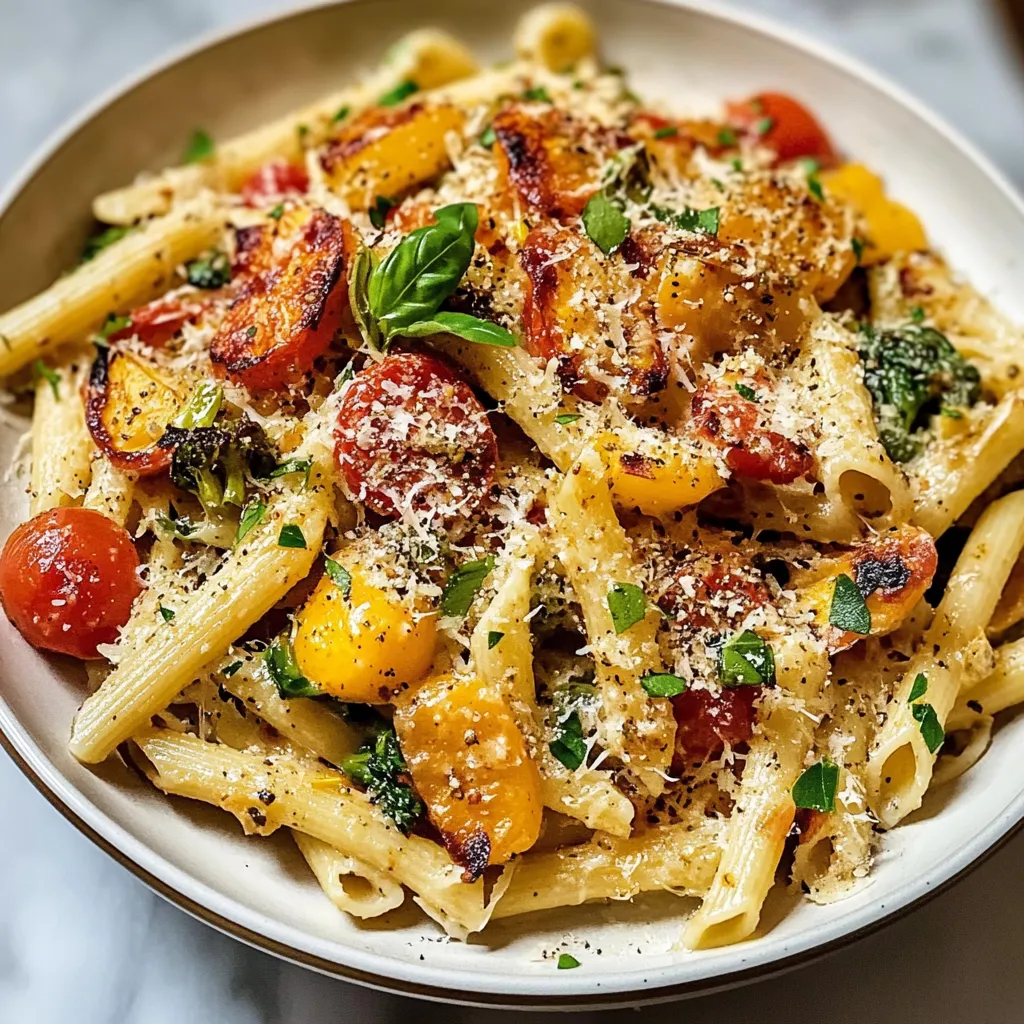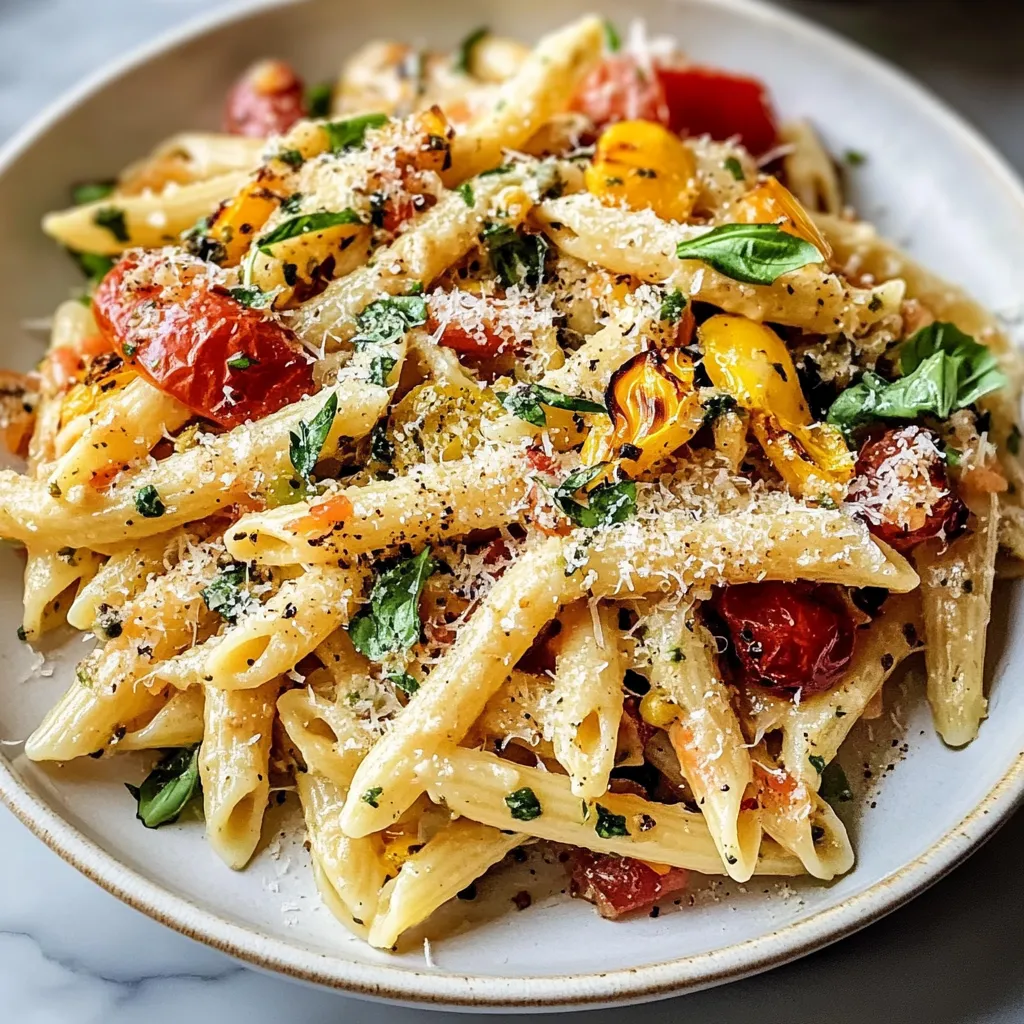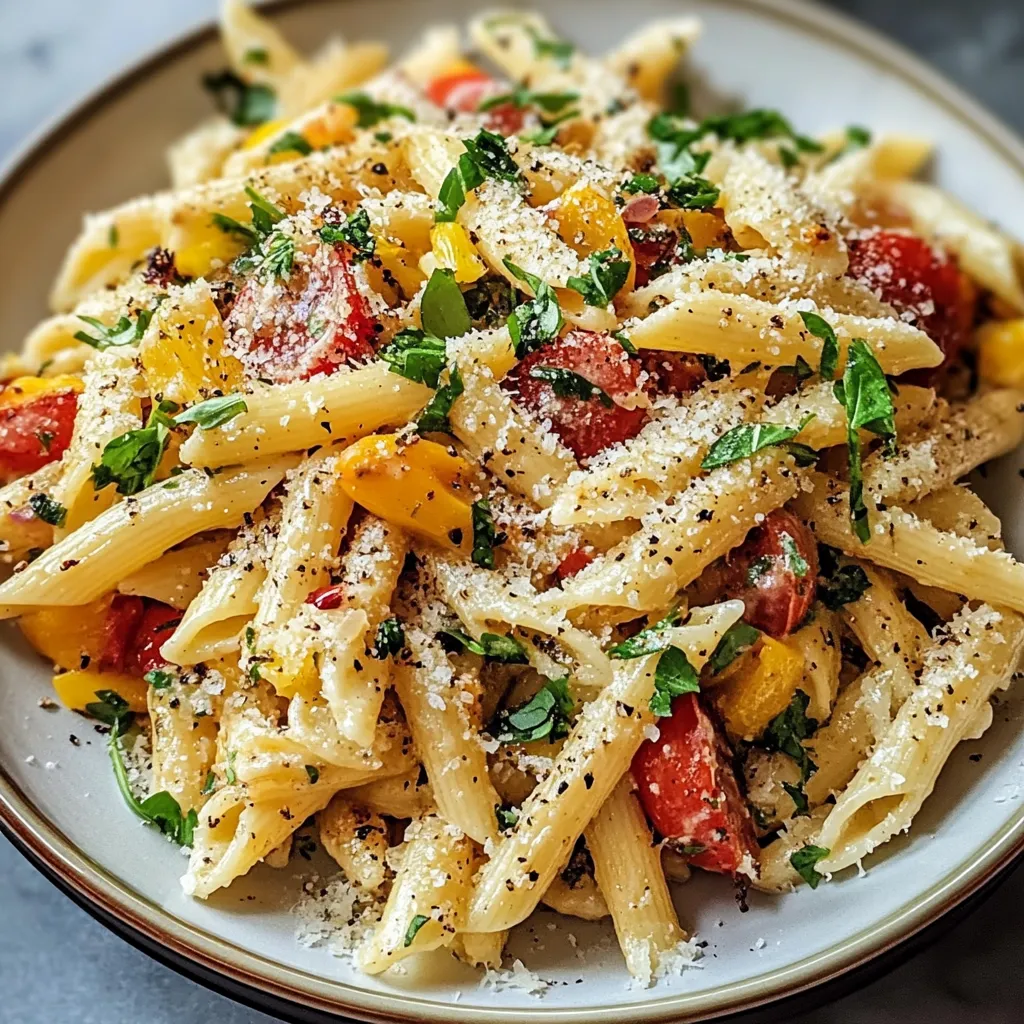 Pin
Pin
This pasta primavera celebrates spring's bounty with colorful vegetables and a creamy Parmesan sauce that perfectly coats each piece of pasta. I first created this dish when my vegetable garden was overflowing and needed a weeknight meal that would showcase the fresh harvest.
My family requests this pasta primavera at least twice a month now. What started as a way to use garden vegetables has become our go-to comfort food that everyone agrees on even my pickiest eater.
Ingredients
- 12 ounces pasta: penne or bucatini work beautifully as they catch the sauce in their ridges and hollows
- Extra virgin olive oil: brings a fruity foundation to the vegetable sauté
- Large shallot: provides a milder onion flavor that doesn't overpower the vegetables
- Carrot: cut into matchsticks adds sweetness and beautiful color contrast
- Zucchini and yellow squash: these summer squashes provide the perfect tender bite
- Unsalted butter: forms the rich base of our sauce giving us control over the saltiness
- Freshly grated Parmesan cheese: always grate your own for the best melting quality
- Whole milk: creates silky texture you can substitute half and half for even more richness
- Dried basil: infuses the sauce with classic Italian flavor
- Garlic powder: provides even flavor distribution throughout the sauce
- Sun dried tomatoes: concentrated bursts of umami that elevate the entire dish
- Cherry tomatoes: fresh brightness that pops against the creamy sauce
- Fresh basil: optional but highly recommended for that aromatic finish
Step-by-Step Instructions
- Cook the Pasta:
- Bring a large pot of generously salted water to a rolling boil. The water should taste like the sea. Add your pasta and cook until al dente about 8 to 10 minutes depending on the shape. Be sure to taste before draining as package times can vary. Reserve a cup of pasta water before draining in case you need to loosen the sauce later.
- Sauté the First Vegetables:
- While the pasta cooks heat a tablespoon of olive oil in a large skillet over medium high heat until it shimmers. Add the shallots and carrots which take longer to cook than the summer squash. Stir frequently for about 5 minutes until the shallots become translucent and the carrots begin to soften. The goal is tender crisp vegetables not mushy ones. Transfer to a plate to prevent overcooking.
- Cook the Summer Squash:
- In the same skillet add another tablespoon of olive oil and arrange your zucchini and yellow squash pieces in a single layer. This ensures proper browning. Let them cook undisturbed for 3 minutes until they develop a golden crust then flip and cook another 3 minutes. The caramelization adds tremendous flavor. Add to the plate with the carrots and shallots.
- Create the Sauce:
- Reduce the heat to medium and add the butter to the skillet. Once melted whisk in the Parmesan cheese milk and seasonings until completely smooth. The sauce should coat the back of a spoon. Add the sun dried and cherry tomatoes and cook just until the cherry tomatoes start to soften about 2 minutes. The residual heat will continue cooking them.
- Combine Everything:
- Remove the skillet from heat and add the drained pasta and cooked vegetables. Toss thoroughly until every piece of pasta is coated with sauce and the vegetables are evenly distributed. If the sauce seems too thick add a splash of reserved pasta water or additional milk to reach your desired consistency.
 Pin
Pin
The sun dried tomatoes are truly the secret ingredient in this recipe. My grandmother always added them to her pasta dishes for an extra layer of flavor and I continue the tradition. The first time I made this for my husband he immediately identified them as what made the dish special even before I mentioned it.
Vegetable Variations
This pasta primavera welcomes seasonal adaptation. In spring try adding blanched asparagus tips snap peas or English peas. Summer calls for bell peppers eggplant or corn kernels cut fresh from the cob. Fall vegetables like butternut squash or brussels sprouts work beautifully when roasted separately then added to the finished dish. Winter greens such as kale or spinach can be wilted directly into the hot sauce before adding the pasta.
 Pin
Pin
Make It Ahead
Prepare this dish up to two days in advance storing it in an airtight container in the refrigerator. When reheating add a splash of milk and warm gently over medium low heat stirring occasionally. The pasta will absorb some of the sauce as it sits so the extra liquid helps restore its creamy consistency. I often make a double batch on Sunday to enjoy throughout the busy week with different protein additions.
Protein Additions
Transform this vegetable pasta into a heartier meal by adding protein. Grilled chicken breast sliced on the diagonal adds elegance and substance. Italian sausage removed from casings and crumbled provides savory depth. For seafood lovers sautéed shrimp or scallops make this dish special enough for company. Vegetarians might enjoy white beans or cubes of firm tofu tossed in at the final stage.
Recipe FAQs
- → Can I use different vegetables in this pasta primavera?
Absolutely! Pasta primavera is extremely versatile. Try adding bell peppers, asparagus, broccoli, or peas. The key is to cook each vegetable properly—harder vegetables need more cooking time than tender ones. Just maintain a colorful mix for traditional primavera appeal.
- → What's the best pasta shape for this dish?
While the recipe suggests penne or bucatini, any medium pasta shape works well. Farfalle, fusilli, or rotini are excellent choices as their shapes help capture the sauce and small vegetable pieces. Longer pastas like fettuccine or linguine can also work beautifully.
- → Can I make this pasta primavera dairy-free?
Yes! Replace butter with additional olive oil, substitute nutritional yeast for Parmesan, and use unsweetened plant-based milk (almond, oat, or cashew work well). You might need to add a tablespoon of flour to thicken the sauce properly.
- → How do I store and reheat leftovers?
Store leftovers in an airtight container in the refrigerator for up to 3 days. When reheating, add a splash of milk or water before microwaving or warming in a skillet over medium-low heat, as the pasta will have absorbed some of the sauce. Stir occasionally while reheating to distribute the heat evenly.
- → Can I prepare components of this dish ahead of time?
Yes! Chop all vegetables up to 2 days ahead and store in separate containers in the refrigerator. You can also pre-cook the pasta (slightly undercook it), toss with a bit of olive oil, and refrigerate. When ready to serve, sauté the vegetables and make the sauce fresh, then combine with the pre-cooked pasta until heated through.
- → What herbs pair well with pasta primavera?
Beyond the suggested basil and parsley, try fresh oregano, thyme, chives, or tarragon. For a more robust flavor, add herbs during cooking, but for brightness, sprinkle them fresh just before serving. A mix of herbs works beautifully for a garden-fresh taste.
